TWS headphones still have a long way to go from senseless (hardware experience) to seamless (functional ecology)...

On November 25, Europe announced that the global 4.3 billion of IPv4 addresses had run out. In an instant, there was an illusion that IPv6 could speak for the next generation of Internet better than 5G.
After all, IPv6 is closely related to everyone connected to the Internet. However, 5G is a bit illusory for us now. Before the arrival of general equipment and explosive content belonging to 5G era, 5G's high speed, wide connection and low delay were only flowers in the moon mirror in the water.
However, this brings a sense of IPv6 opening up the next generation of Internet. However, the top-level addresses of IPv4 were exhausted as early as 2012, and the IPvV4 address pool in the Asia-Pacific region was also exhausted in 2016. Obviously, we have no sense of existence in the international media. Even though we have started the massive IPv6 deployment project in the past year or so, the dawn here is still quiet, until this time we took the lead in entering the 5G "first year", it was still just not painful.
Even if Huawei sounded the clarion call to enter the 5G era in February, the Ministry of Industry and Information Technology issued 5G licenses in June. However, the concerted efforts in China were easily put on the brake by the iPhone 11, which was determined not to be 5G in September, and the fruit powder seemed to have been cast on some "political shadow" at once ".
Of course, this has something to do with the long-term dependence of Chinese manufacturing.
But whether it is superstition or science, there must be a Bug when it rises to faith.
Not to mention the differences between domestic and foreign communication manufacturers, the fact is that the reformers in the 5G era are not as good as imagined, and the clings in the 4G era are not as bad as imagined. In view of the lack of "maiden work" they handed over, we hardly feel any "marker" that belongs exclusively to the 5G era ".
This is the regret of 5G mobile phones and the haze of the first year of 5G.
However, it seems meaningless to blame all this on Trump's insistent trade war.
It is undeniable that the trade war does have a certain impact. Huawei, the domestic and even the international community have been forced to speed up the pace of 5G landing; 5G, which was "born" at least half a year ahead of schedule, has a trace of obvious "rush to work", but public opinion often Only look at the results without looking at the reasons, this is also a heavy burden that Hongmeng had to bear at the beginning of his birth.
But just as the prosperity of everything is not achieved overnight, so is 5G. The market needs time to digest the technology bonus of 5G, manufacturers also need time to turn technology into products, and users need more time to persuade themselves to take out their wallets. 5G naturally tastes a little bit of rest when all parties hesitate.
But that doesn't mean 5G will slow down:
On June 6, the Ministry of Industry and Information Technology officially issued 5G commercial licenses to China Telecom, China Mobile, China Unicom, and China Radio and Television; marking China's official entry into the first year of 5G commercial use.
On October 31, China Mobile, China Unicom and China Telecom, the three major domestic operators, successively launched 5G commercial packages, with a minimum price of no less than 128 yuan. Although the cost performance of the package has discouraged many consumers, it also shows that we have taken a key step.
Near the end of the year, the international market also suddenly accelerated the pace:
On November 29, NTT officially reported that Hiroshima University and NTT DOCOMO successfully implemented Japan's first 5G telemedicine field experiment. Japan also wants to use the Tokyo Olympics to launch 5G services in 2020.
On December 2, South Korea's Ministry of Science, Information and Communications released data showing that since the launch of 5G commercial services in April this year, the number of 5G users of South Korea's three major mobile operators reached 3.98 million by October this year, and it is estimated that users will exceed 5 million by the end of the year.
On December 2, T-Mobile announced the official launch of the operation of the national 5G network, which also means that the three major U.S. telecommunications companies (AT&T, Verizon, and the T-Mobile of the acquisition of Japan's Softbank Group Sprint) have all entered the 5G era.
On December 3, before Qualcomm released the Xiaolong 865 at the Xiaolong Technology Summit, MediaTek (MediaTek) released its first flagship 5G chip aimed at the high-end market, Tianji 1000, about a week in advance.
On December 3, Qualcomm released two new 5G Xiaolong mobile platforms 865 and 765/765G at the Hawaii Summit, heralding the completion of the assembly of the top six manufacturers in the 5G mobile phone industry: Huawei Glory to Carry Self-developed Chips, Samsung Continues Two Plans of Qualcomm and Its Own Chips, and Apple Has Self-developed Chips Ability by Acquiring Intel; vivo and Samsung, Xiaomi and MediaTek, OPPO and Qualcomm selectively.
Of course, these are only the tip of the iceberg in the 5G mobilization. But from the tip of these icebergs, we can already find that from national policies to market operations, from application scenarios to underlying logic, the world is much more ready for us than imagined.
How much time does the market, manufacturers and users need, we don't know?
The only thing we know is that apart from these human factors, we have experienced the transition from the initial technology-intensive automobile manufacturing industry to the capital-intensive mobile phone manufacturing industry. When automobile manufacturing is facing the transformation problem and the development of mobile phone manufacturing is stagnant, We seem to be entering a new era-creative intensive industries, wearable device manufacturing era.
While Google, Facebook and Microsoft are all struggling, the wearable device field suddenly gave birth to a giant beast: with Apple Watch in 2014 and AirPods in 2016, Apple is like a duck to water.
If Apple Watch is only using Apple's design language to attract users with inner beauty, AirPods has the taste of kidnapping users. Especially after the iPhone 7 cancels the 3.5mm earphone hole, whether the sound quality of the AirPods can match its price of thousands of yuan is really a bit metaphysical.
So far, the wearable device field has finally rounded up five giants: Apple, Xiaomi, Huawei, Samsung, and Google in Fitbit.
(1)
A brief history of headphones?
○

When the confirmation time becomes more and more chicken ribs, unconsciously, music has become an indispensable conditioner in our daily life.
However, despite our increasing demand for music, our understanding of headphones is not as deep as that of mobile phones.
For example, most people know that the first mobile phone to be introduced for civilian use was Motorola, which was launched in 1973, but few people know that the world's first earphone was born in 1881. They were first equipped for telephone operators and weighed almost 10 pounds.
In 1891, French engineer Ernest Mercadier invented the world's first in-ear earphone, but it was not used to listen to songs, but to liberate the hands of the telephone operator.
In 1895, the British Electrophone Company introduced an audio system that allows users to listen to the "live broadcast" of programs in London's theaters at home-the birth of casual headphones.
In 1910, an American Mormon invented an "audio receiving device" composed of two sound units connected together by iron plates in his kitchen. Users no longer need to hold a pole to hold the two ear bags to the ears, but only need to buckle it on their heads-headphones are born.
In 1937, Germany's Baia Power launched the world's first moving coil earphone DT-48, and began to enter the families of ordinary people-the birth of moving coil earphones.
But until now, headphones are still only a professional device and have little to do with listening to songs.
In 1958, American jazz musician John Koss, with the help of engineer friends, developed the first dual-channel stereo headset in history: Koss SP/3 -- stereo headset was born.
In 1968, engineer Erhard Mecris made a headband for the two microphones on the same pivot rod, and installed some foam on the plastic case to reduce the pressure on the ears. This epoch-making open stereo The headset was named HD414-the birth of the open headset.
In 1979, Ishuda and Akio Morita jointly made a portable tape player called "Walkman" on the basis of a reporter's interview machine "Pressman"; the walkman at that time could even plug in two headphones.
In 2000, Nokia introduced the first Bluetooth headset HDW-1, which can only be used to make phone calls and is mostly designed on one side-Bluetooth headset.
In the same year, Bose launched an anti-noise earphone QuietComfort for the general public-noise-canceling earphones were born.
In 2001, Apple brought its own digital multimedia player, but accidentally glowed the second spring of earplug headphones.
In 2008, Dr. Dre, the godfather of hippy, Jimmy Iovine, chairman of record company Interscope Geffen A & M, and the magic sound earphone Monster jointly launched Beats by Dre earphones, which once occupied half of the earphone market.
In 2012, the double-sided in-ear Bluetooth headset was born, and the traditional single-sided large-volume headset form began to gradually withdraw from the stage.
In 2015, Japan's Enbridge Company launched a headset with two independent earplugs without any wire link at the IFA exhibition -- TWS headset was born.
However, no matter how hard and innovative these pioneers in the earphone industry have made, only the AirPods released by Apple in 2016 is really bound to the concept of real wireless. Just like the great success of the iPhone, this time it "stole" the experience of friends and cut off the "safety rope". It also took the world's condemnation to cancel the 3.5mm earphone hole on the iPhone 7.
②
The birth of AirPods?
○
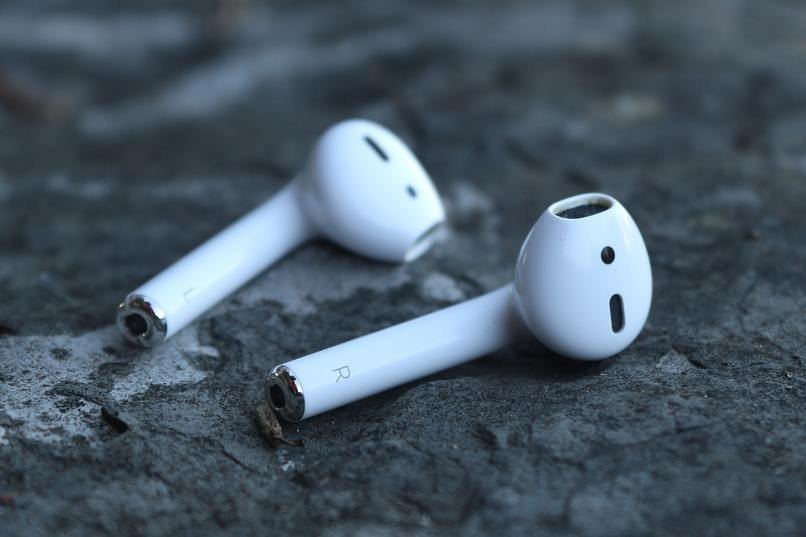
From 16 million in 2017 and 35 million in 2018 to 60 million in 2019 and 1 in 2020, AirPods has become a social nuclear weapon for young people.
But before that, AirPods are not without stories.
In 2012, Apple launched its original headset EarPods the day before the iPhone 5 was released, and it gained a lot of affirmation at the beginning.
In 2014, 360 released smart keys and Xiaomi introduced rice keys. Domestic manufacturers are still busy scrambling for the "geomantic treasure land" of earphone sockets. Apple spent $3 billion on Beats, a headset manufacturer, and finally "swung a knife from the palace".
On the one hand, it is the domestic manufacturers that focus on petty profits, and on the other hand, it is the apple that broke out in silence.
In 2016, AirPods and iPhone 7 appeared successively.
At the press conference, Phil Schiller first announced that the iPhone 7 would cancel the earphone hole, and then immediately announced that a better solution-AirPods-was introduced for the iPhone without earphone hole.
This surprise announcement strategy is undoubtedly suicidal for other manufacturers, but even if this alternative is worth 1558 yuan on Apple, it seems harmless. The result is obvious that AirPods is at least one year faster than other manufacturers in a series of basic experiences such as TWS headset portability, connection performance, microphone effect, etc.
Even if the current design of AirPods Pro is a bit unsatisfactory, with the "price reduction promotion" of iPhone 11, the sales volume of AirPods Pro will not be too bad.
Apart from the rising sales volume on the surface, everyone must still be bitter about AirPods "sacrifice" of 3.5mm earphone holes, but this may be the price to be paid for AirPods success.
From the initial professional equipment to the current TWS headset, we have gone through many shortcuts and detours in 138 years, and most of them revolve around the same iron law of development: from bulky to light, from redundancy to simplicity, from fool to intelligence.
From bulky to light, this is a sign of mature technology. From fool to intelligence, this is the source of product evolution. There is no doubt about this, just from redundant to simple, cut off the earphone line we can still understand, after all, we have been troubled by the earphone line knotted; Just canceling the 3.5mm earphone hole is a bit puzzling. It is only a matter of opinion to say that it saves internal space and can prevent water.
But one thing, before the iPhone 7, headphones were used as spare parts for mobile phones, and whether they were there or not was really not as important as imagined.
After the iPhone 7, although the earphone is still an accessory, after Apple insisted on "blocking" its 3.5mm "pipe", the earphone seems to have suddenly become the soul mate of the mobile phone. At this time, the AirPods is not only a symbol of force and preference, but also a sense of security.
The iPhone canceled the 3.5mm earphone hole because it has a better solution AirPods, although this better solution is only using new problems to obliterate earPods old problems; But at least the overall feeling of iOS is coming up.
But other companies are busy following the trend when there is no better headset solution, which is a kind of original sin.
Indeed, eliminating the 3.5mm earphone hole has many benefits, not only making the mobile phone lighter and thinner, but also freeing up space for batteries to occupy and improving the battery life of the mobile phone. The future will be wireless. There is no doubt that wearable devices in the future will be seamlessly or even non-sensational integrated into our daily life.
(3)
Smart headset war?
○
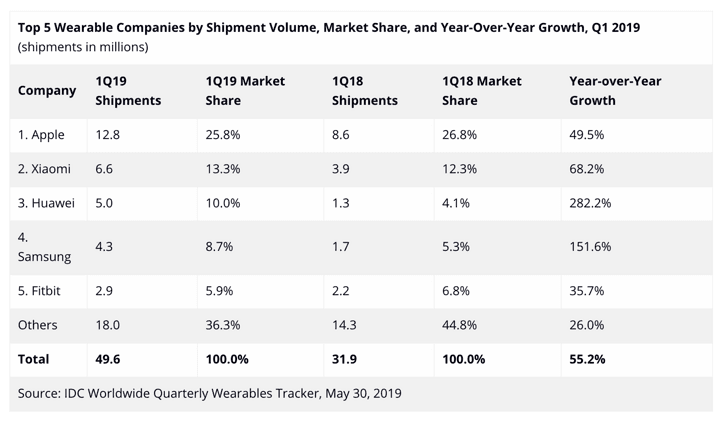
In March 2017, IDC mentioned in the previous year's "Global Wearable Device Tracking Report" that ear-worn devices will achieve an annual growth rate of about 43% in the next five years, becoming one of the most popular wearable devices. Although in 2016, the shipment volume of ear wearable devices was only 700,000, the 49 million of smart watches and the 48 million of smart bracelets in the same period.
The hot sale of AirPods seems to reflect some of the facts, although it has not yet touched areas such as sports tracking and health.
In May, IDC released the "Global Wearable Device Tracking Report" for the first quarter of 2019. The report showed that Q1's global wearable device shipments were 49.6 million, of which smart watches and smart bracelets still accounted for the vast majority-63.2%, ear wearable device shipments increased by 135.1% year-on-year, the largest increase in history, and 17 million sets were sold in the first quarter.
In 2018, as more and more mobile phones cancel the earphone holes, the presence of wireless Bluetooth headsets is getting stronger and stronger, and they have begun to try to integrate or connect the smart voice assistants of the mobile phone. In many cases, they do not take out the mobile phone immediately, and only use it. Very complicated operations can be completed by voice commands or buttons and touch on the headset.
At a time when the development of head wear and head display devices has entered a bottleneck one after another, and the human body implantation technology and brain-computer interface are too punk, smart watches can only be used as a health portal for the time being, and smart headphones seem to have greater possibilities as a voice interaction portal.
So, after Apple snapped off TWS headphones, Google, Samsung, Microsoft, Amazon and Huawei were all busy laying out:
In October 2017, Gu Ge launched the wireless headset Pixel Buds, which focuses on real-time voice translation. At the same time, Samsung also launched its own Gear IconX, which focuses on sports health and voice interaction. In December 2017, Migu & HKUST Xunfei and 1MORE & Tencent Jingle both launched similar wireless Bluetooth headphones and put on the banner of "smart headphones.
During CES in 2018, Jethron took the lead in releasing Elite 65t wireless headphones, supporting one-touch activation of Siri, Google Now and Amazon Alexa. Sony launched Xperia Ear Duo wireless headphones on MWC, which integrates Google Assistant and Siri voice assistant to meet the needs of Android users and iOS users.
In February 2019, Samsung launched Gear IconX's successor, the Galaxy Buds tuned by AKG, which focuses on ambient sound and endurance functions. In March, F IIL launched a new real wireless bluetooth headset FIIL T1, featuring HiFi-level sound quality sports headphones. In July, Sonny released his true wireless noise reduction headset WF-1000XM3 amid thousands of calls, focusing on noise reduction and true wireless selling points; in order to launch the first real wireless Bluetooth headset FreeBuds 3 with Kirin A1 chip, September China focuses on open design and active noise reduction. At the end of September, Amazon launched Echo Buds wireless headphones with Alexa assistant as the core, featuring noise reduction and immersive experience. In October, Micro Soft released the Surface Earbuds of Surface's first earplug products, featuring real wireless design and all-day endurance. At the end of October, Apple quietly put on its third-generation AirPods, support voice wake-up, main noise reduction function.
These are certainly not all, but they can already explain many problems:
1. Intelligent headphones are breaking through the traditional pattern and are desperately trying to play for themselves;
2. As a new interactive portal, smart headphones show sufficient openness;
3. Consumers are paying more and more attention to the smart headset itself, actively reducing noise and immersing experience.
Although major manufacturers have to break their heads and enter the smart headset market, they are not so much jealous of the "technology premium" of this piece, as they care about the new generation of "interactive entrance" of the ear ".
As a result, there are various "artifacts" that are not popular in the market.
And with the further "unification" of the mobile phone pattern in the international market, headphones, which were originally produced by professional manufacturers, will show a more radical sense of accessories; to some extent, the market share of mobile phones is the upper limit of headphones.
After all, in the case of headphones and mobile phones, the original match is better than the mix and match.
④
A glimpse of domestic headphones?
○
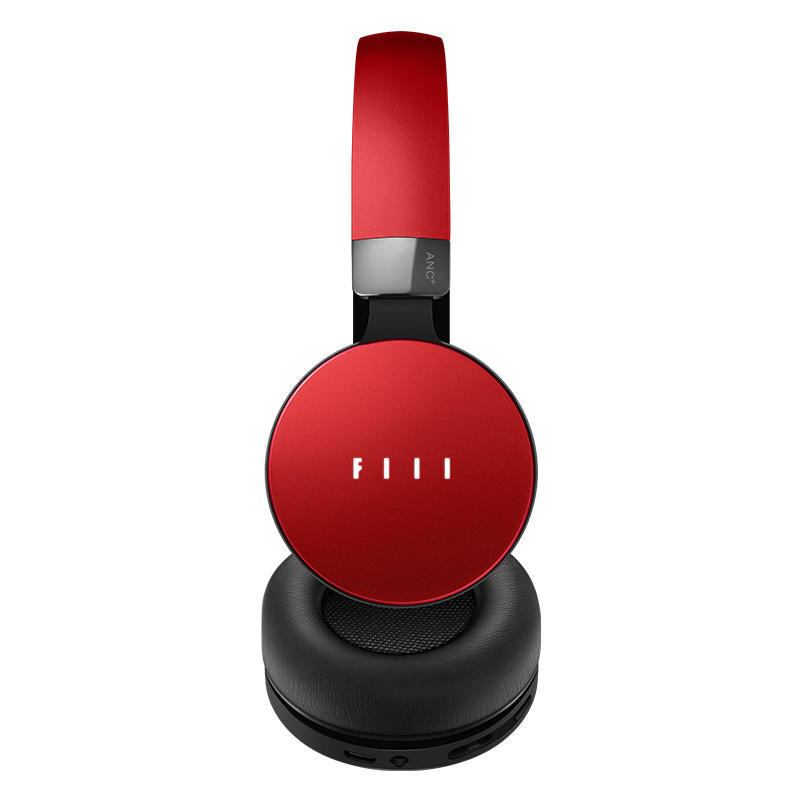
What is more embarrassing is that in the field of mobile phones, from China Cool Union to Huami OV, we have almost completed the mission of "expelling the Tartars and restoring China". Although there are not many people who can take out their hands in the field of automobiles, there are some different kinds of things like Weilai and Xiaopeng. Mi band can also win by quantity in the field of wearing. But in the smart headset or TWS headset, the gap between us and AirPods is a world of difference.
The middle and high-end earphone market is basically guarded by German, American, and Japanese brands, such as AKG, Sennheiser, Iron Triangle, Sony, Beats, etc. Its products are often tens of thousands of yuan, mainly used in monitoring, office and other professional fields; Although there are many domestic unknown brands in the low-end market, the price ranges from a few yuan to tens of yuan, and the proportion below 300 yuan exceeds 60%.
The most intuitive feeling is that Huaqiangbei, as the first electronic street in China, is becoming more and more inactive: on one side are large posters of major mobile phone manufacturers, and on the other are various brand beauty makeup symbolizing youthful vitality.
With Huawei OV breaking out of the siege, Huaqiangbei, which once used mobile phones as its lifeline, showed a sense of fatalism of "no talent.
Now it is the Airpods Pro that Apple has spent two years developing. As long as the 99% is similar, this is probably the last romance of Huaqiang North.
Outside Huaqiang North, the only thing we can take out our hands is probably the headset -- Fiil, which Wang Feng participated in the design.
Of course, the popularity of Fiil headphones is inseparable from the nature of Wang Feng's own topic.
In October 2015, Wang Feng held the largest conference in the history of China's earphone industry for Fiil earphones, releasing three products: Fiil Bluetooth 1599 yuan, Fiil Cable 1099 yuan and Fiil In-Ear 599 yuan.
The price of the three products is much lower than that of several major professional earphone brands in Germany, the United States and Japan, and even lower than that of domestic brand Dayinke.
I don't know how the real experience of this product is. After all, for a heavy audio user who doesn't wear headphones very much, I really hate the bulkiness of the head-mounted type, the redundancy of the neck-mounted type and the in-ear type. Although EarPods this semi-in-ear type experience is more friendly, I am still not used to it after a long time.
As for the AirPods wireless earphone, it is naturally good from the effect diagram, but the wearing state really has a feeling that the face is stuck with a foreign body, so a "white cotton swab" is long. It is easy to lose, even if it is not waterproof, it will really make people feel psychological shadow.
Recently, this AirPods Pro has been changed to in-ear type. I don't know what Apple thinks. Is it just to prevent it from being lost?
Although this is a bit one-sided, but if you think about it carefully, is headphones really the best entrance for voice interaction in the future:
First: Limited by the structure and function, the headset is not suitable for loading too large a screen at this stage, so there is an upper limit on the density of information it transmits;
Second: Since the human body itself is quite sensitive to the perception of the ears, the subtle operations will also be amplified, which is not suitable for adding too much touch interaction.
So, what should more orthodox future headphones look like?
⑤
Headphones of the future?
○
Here we need to go back to the product itself, deconstruct the meaning of its existence, and then start from another angle.
First: heterogeneous headphones
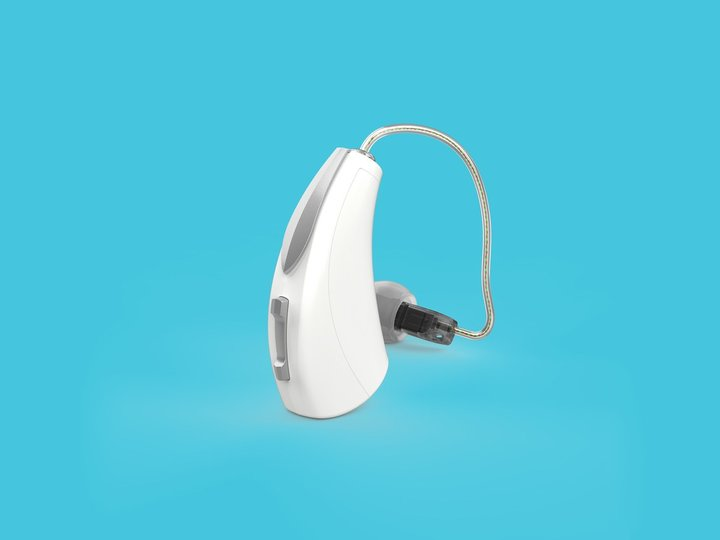
Noise reduction is certainly a compulsory course for intelligent headphones, but similar to hearing aids, which expand the originally inaudible sound, and then use the residual hearing of the hearing impaired, so that the sound can be sent to the auditory center of the brain, and the way of feeling the sound need not be used to make "next generation headphones".
After all, the essence of hearing aids and wireless headphones is only an extension of ear function.
Starkey, one of the world's top five hearing aid manufacturers, plans to sell hearing aids to ordinary people without hearing impairment.
Last year, Starkey launched an AI-based intelligent hearing aid Livio AI, which integrates hearing aids, voice assistants, real-time translation, wireless audio transmission, sports health data monitoring and other common wearable device functions in the market into this device.
At a time when headphones are becoming more and more fashionable, specialization and medical instrumentation may also be an option.
Second: AR headphones
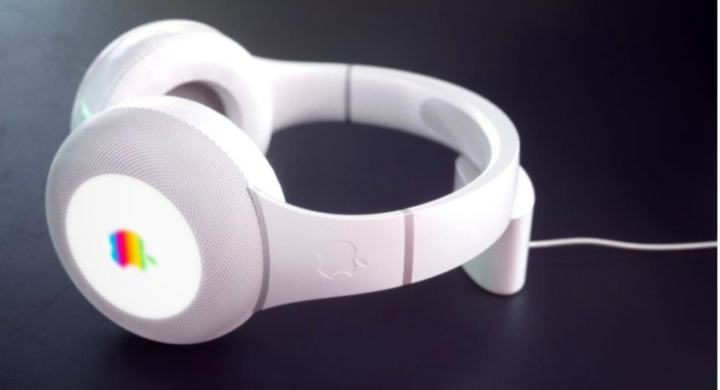
Apple announced its own AR headset patent in November, which allows users to virtually locate sound in real space.
In short, when you talk to others on the phone, even if you are the only one in the room, you can make the voices on the phone all over the room, which is especially effective when many people talk.
It can be imagined that it will not only be used in work in the future, but also in more scenes such as FaceTime group chat and games, bringing more daily changes to our lives.
The significance of this technology for individuals is not yet clear, but it still has considerable potential for group interaction and the sense of presence in virtual reality.
Third: Non-headphones
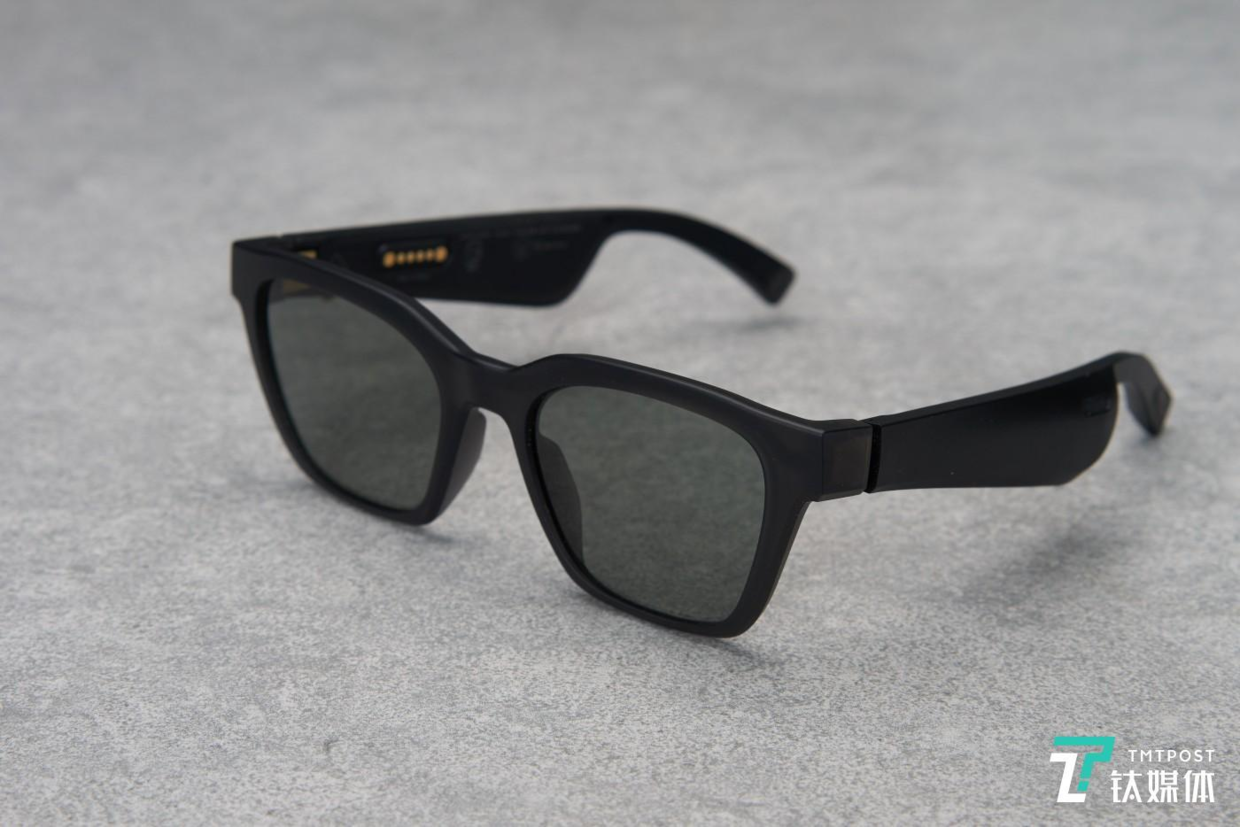
While everyone was busy eliminating the earphone line, BOSE introduced a real wireless -- BOSE FRAMES, which does not even exist in the earphone itself. It makes headphones into sunglasses, more like an intelligent magic mirror with voice function.
From the front of BOSE FRAMES, it is a pair of simple sunglasses, and its design is not surprising. However, there are six openings in its side mirror legs, which integrate a series of electronic components such as the sound unit and microphone of this earphone.
Even so, the entire smart sunglasses weigh less than 45g and last 3.5 hours.
This kind of earphone, which is not an earphone, may also be an option for many users who do not want to wear earphones.
Fourth: Replace headphones
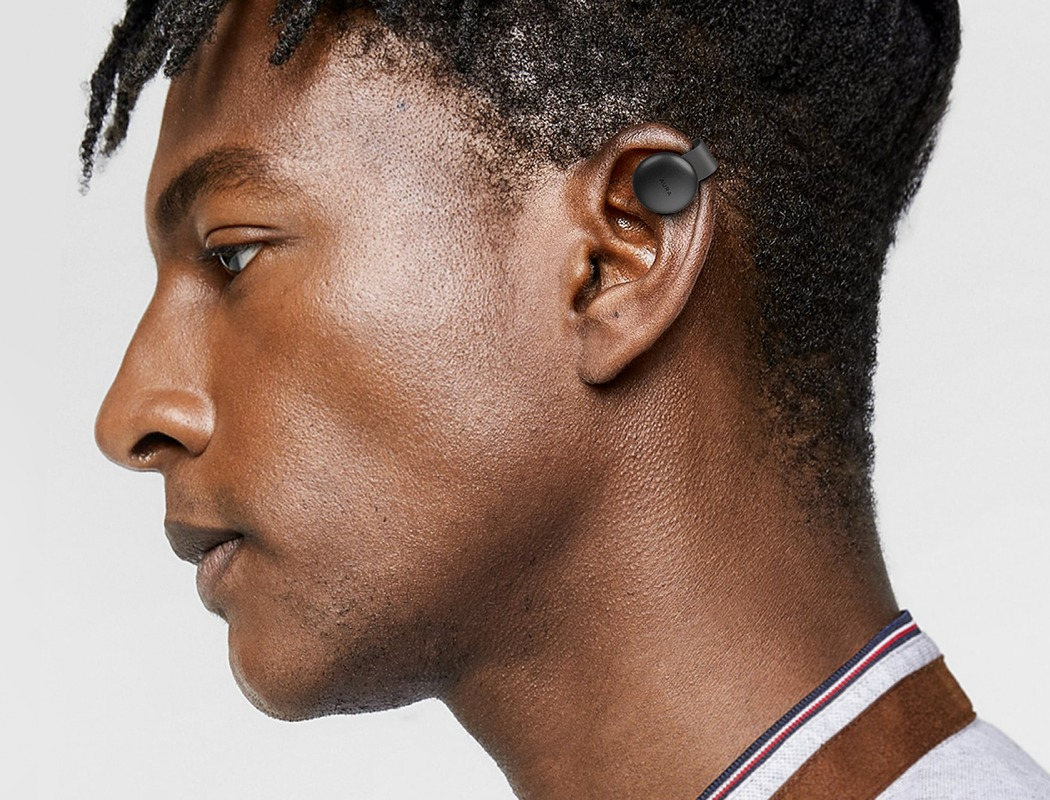
The Aura PEBL, a concept earphone designed by Emerson Holladay, does not follow the design specifications of traditional earphones. It even jumps out of the functional shackles of smart earphones and is specially designed for the future of augmented reality and virtual reality, greatly reducing the intrusiveness.
It looks like a "button" attached to the ear, making a sound through the button-shaped main body. To some extent, it is a super mini speaker that can be worn.
We don't know how valuable this design is, but this idea of jumping out of the fence is worth learning.
However, earphones that stick to shape and earphones that stick to function will eventually be eliminated by the times. On the eve of the Internet of Everything, we should return to essence. What is the best sound solution? We should pay more attention to the "upgrading" of experience, not just the "evolution" of shape and function ".

We don't know how long TWS headphones will be on fire, and we don't know when they will be replaced by new smart wearable devices. The only thing we know is that with the entry of various communication manufacturers and copying Apple's scripts, there will be a greater degree of homogeneity in the field of smart headphones.
Moreover, as the expansion of mobile phone manufacturers comes to an end, major manufacturers may one after another hype their own official distribution and CP combined with other manufacturers to "capture" more users.
This can inject new vitality into the smart headset market and bring more choices to consumers.
But no matter where the smart headset can finally go, at least for now, it may be the last smart wearable device before the beginning of the Internet of Everything era.
Because in the coming era of the Internet of Everything, we are bound to usher in a new wave of smart devices ".
PS: Some materials come from @ zaker @ ifanr @ Observer @ Titanium Media
The head picture comes from the Behance author @ Peng Yang
The copyright of this work belongs to 何鲸洛. No use is allowed without explicit permission from owner.

New user?Create an account
Log In Reset your password.
Account existed?Log In
Read and agree to the User Agreement Terms of Use.

Please enter your email to reset your password
The in-ear of AirPods Pro is for noise reduction effect.
It depends on how many data systems and scientific and technological materials can write such articles. How did you learn?
Huaqiang North is too real. A few days ago, it looked like a net red street.
There is no doubt that the trend of the times will change and tws will become routine.
Big Brother has published another article ~ ~